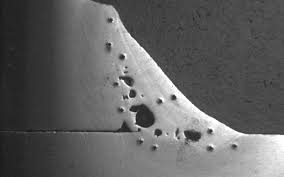What is Porosity in Welding: Usual Resources and Reliable Solutions
Comprehending Porosity in Welding: Discovering Causes, Impacts, and Avoidance Strategies
As experts in the welding sector are well conscious, recognizing the causes, impacts, and avoidance strategies associated to porosity is essential for attaining durable and trusted welds. By diving into the root causes of porosity, examining its destructive impacts on weld quality, and checking out efficient avoidance approaches, welders can enhance their knowledge and skills to produce top notch welds continually.
Typical Reasons For Porosity
Porosity in welding is mostly created by a mix of factors such as contamination, incorrect shielding, and insufficient gas insurance coverage throughout the welding process. Contamination, in the form of dirt, oil, or rust on the welding surface, produces gas pockets when heated up, resulting in porosity in the weld. Incorrect protecting occurs when the shielding gas, generally utilized in procedures like MIG and TIG welding, is not able to totally protect the liquified weld pool from responding with the bordering air, leading to gas entrapment and succeeding porosity. Additionally, inadequate gas insurance coverage, commonly because of incorrect circulation prices or nozzle positioning, can leave parts of the weld unsafe, enabling porosity to form. These aspects collectively contribute to the development of spaces within the weld, weakening its honesty and potentially causing structural problems. Understanding and addressing these common causes are important action in stopping porosity and making certain the high quality and strength of bonded joints.
Results on Weld Quality
The existence of porosity in a weld can significantly jeopardize the overall high quality and honesty of the bonded joint. Porosity within a weld creates gaps or cavities that deteriorate the structure, making it a lot more susceptible to breaking, corrosion, and mechanical failure.
Additionally, porosity can hinder the effectiveness of non-destructive screening (NDT) techniques, making it challenging to spot other defects or interruptions within the weld. This can cause considerable safety and security worries, particularly in important applications where the structural stability of the welded components is extremely important.

Prevention Techniques Review
Offered the destructive impact of porosity on weld top quality, reliable prevention methods are vital to preserving the architectural stability of welded joints. One of the main prevention strategies is complete cleaning of the base materials before welding. Contaminants such as oil, grease, corrosion, and dampness can add to porosity, so making sure a clean work surface area is crucial. Appropriate storage of welding consumables in completely dry conditions is also essential to avoid moisture absorption, which can cause gas entrapment throughout welding. In addition, picking the suitable welding parameters, such as voltage, existing, and take a trip speed, can aid decrease the threat of porosity development. Making sure adequate shielding gas circulation and protection is one more essential prevention method, as insufficient gas insurance coverage can result in climatic contamination and porosity. Lastly, proper welder training and qualification are vital for implementing precautionary steps properly and constantly. By incorporating these prevention strategies into welding practices, the incident of porosity can be dramatically decreased, leading to stronger and extra reputable welded joints.
Value of Correct Shielding
Appropriate securing in welding plays a crucial function in preventing climatic contamination and guaranteeing the stability of welded joints. Securing gases, such as argon, helium, or a blend of both, are generally used to shield the weld swimming pool from responding with aspects in the air like oxygen and nitrogen. When these responsive components come into call with the hot weld swimming pool, they can trigger porosity, leading to weak welds with decreased mechanical properties.

Insufficient protecting can result in various problems like porosity, spatter, and oxidation, endangering the structural integrity of the bonded joint. As a result, adhering to proper securing techniques is necessary to produce top quality welds with minimal issues and make sure the durability and reliability of the bonded components (What is Porosity).
Tracking and Control Techniques
Exactly how can welders successfully keep track of and regulate the welding process to make sure optimal results and stop defects like porosity? By continually checking these variables, welders can determine variances from the ideal conditions and make prompt changes to avoid porosity formation.

Furthermore, applying proper training programs for welders is vital for checking and navigate to this site controlling the welding process properly. What is Porosity. Informing welders on the significance of maintaining regular specifications, such as proper gas protecting and take a trip speed, can aid stop porosity issues. Normal evaluations and certifications can also make sure that welders are skillful in tracking and regulating welding procedures
Furthermore, making use of automated welding systems can improve monitoring and control abilities. These systems can precisely regulate welding specifications, reducing the possibility of human error and ensuring constant weld quality. By integrating innovative monitoring technologies, training programs, and automated systems, welders can properly check and regulate the welding procedure to reduce porosity flaws and attain premium welds.
Verdict
